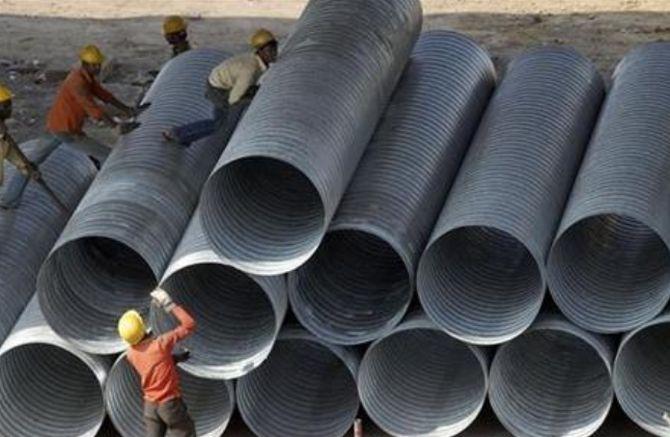Strong demand in the domestic market, coupled with an increase in raw material prices, is pushing up steel prices.

According to SteelMint, a market intelligence and price reporting firm, the list price of flat steel has seen an increase of Rs 750-2,000 per tonne for October deliveries.
The long steel price witnessed an increase of Rs 1,500 per tonne towards the end of September.
Trade or spot prices have also seen an upward trend.
The monthly average price in the trade segment for hot-rolled coil (HRC) – a benchmark in flat steel – was Rs 57,900 in September (Mumbai) but stood at Rs 58,950 per tonne as on October 6.
The average price of rebar in long products (Mumbai) was Rs 56,740 per tonne in September and Rs 58,100 per tonne as on October 9.
A major producer attributed the increase in steel prices to the rising cost of raw materials over the past couple of months.
“Worldwide there is an impact on cost and it is a challenge. Both iron ore and coking coal prices have increased.”
Ranjan Dhar, chief marketing officer, ArcelorMittal Nippon Steel India, noted that raw material prices have surged, with coking coal reaching approximately $380 per tonne.
“This poses a major challenge, especially for steel producers who rely on imported coking coal.”
Domestic demand
Flat steel prices began to rise in August after a dip in May-July.
However, trade prices are still below April levels.
Jayanta Roy, senior vice-president, ICRA, suggested that the increase in domestic steel prices reflects the strength of domestic demand.
“HRC prices are at a 9-10 per cent premium to Chinese export prices, which is unusual.
"Producers have been able to pass on the increase in raw material cost because of the strong demand in the domestic market.”
Between April and August, demand registered growth of 13.1 per cent.
Dhar noted that all the consuming segments were doing very well after the monsoon season.
“However, there is a growing concern over the increasing volume of imports.”
Global factor
But there is some uncertainty about whether the premium in domestic prices would hold up.
“Steel is freely traded globally. The 9-10 per cent premium that domestic steel is currently benefiting compared to Chinese export prices is unlikely to continue,” ICRA’s Roy said.
Dhar, on the other hand, expects Chinese prices to pick up.
“China cannot sustain the current price levels, given their negative profit margins at the current raw material cost.
"Consequently, either raw material prices will go down or steel prices will rise.
"In the present scenario, raw material prices are unlikely to decrease.”
During May-September 2023, global steel prices (China HRC FOB) remained stable at $550 per tonne, according to CRISIL Ratings.
Manish Gupta, senior director, CRISIL Ratings, said with a likely demand uptick in the next calendar year (2024), global steel prices are expected to witness some improvement and be $600–$650 per tonne.
Global demand, Gupta said, is expected to remain muted in CY23 at 0-1 per cent and witness a marginal uptick of 1-3 per cent in CY24, with India leading demand growth.
“Demand improvement in CY24 is expected to be broad-based, with increased demand from Europe and the US.”












 © 2025
© 2025